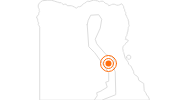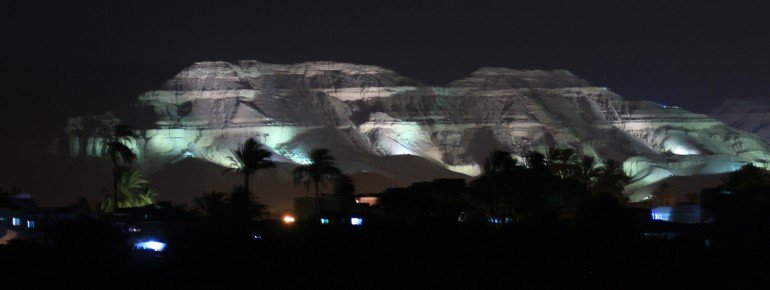Contents
Description
The Valley of the Kings is a burial site of Ancient Egypt where 64 tombs have been found to date. The tombs were numbered chronologically according to the date of their discovery. The numbers 1 to 64 are preceded by the letters KV, for “Kings' Valley”.
Egypt's rulers in particular, who reigned during the so-called New Kingdom from 1550 to 1069 BC, were buried here. From the Nile in Luxor, the prominent rocks on the west bank where the tombs are located are clearly visible.
The tomb of Tutankhamun
Over the millennia, most of the tombs have been cleared out by looters. One exception is the resting place of Tutankhamun (KV62), who died at the age of just 18 and was discovered by British Egyptologist Howard Carter in 1922. The famous treasure that was found is now in the Egyptian Museum in Cairo. A visit to Tutankhamun's tomb costs extra and is not included in the entrance fee for the Valley of the Kings. However, as the tomb is empty today, it is not worth waiting in line. Some of the other tombs in the Valley of the Kings have much more impressive wall decorations.
Tips for visiting the Valley
The Valley of the Kings is one of the most visited sights in Egypt due to its immense significance in world history. In order not to endanger the murals inside the tombs, only a small part of the valley can be visited at a time, while other areas are closed off on a rotating basis. Some tombs are now even completely closed to the public.
One admission ticket entitles you to visit a total of three graves. These can be chosen freely. Only Tutankhamun's tomb can only be visited with an extra ticket. Due to the crowds of visitors, and also because the air inside the tomb is very stuffy, you should not spend more than ten minutes in one of the tombs.
Filming and photography are strictly forbidden in the Valley of the Kings! Due to the large number of visitors, there is no other way to protect the wall paintings and reliefs from decay. Cameras must be handed in at the entrance.
Historical Information
Origin of the Valley of the Kings
The area around Thebes (modern-day Luxor) was already used as a necropolis between 2216 and 2025 BC. During the following dynasties, several mortuary temples were built near the Valley of the Kings, including those of Queen Hatshepsut, whose temple can still be visited today, and Amenophis III, of whose temple complex only the Memnon Colossi remain.
Plundering and dissolution of the tombs
The last pharaoh to have his tomb built in the Valley of the Kings was Ramses XI. He probably died in 1076 or 1070 B.C. At this time, many of the tombs had already been plundered. Later, to protect them from intruders, the mummies were removed and hidden in other tombs. Some of the open tombs were then used as chapels by Coptic Christians in the third century AD.
Scientific exploration of the Valley of the Kings
The valley was first identified as a royal burial site in 1708 by Father Claude Sicard. During the 18th century, a total of around 20 graves were located. When Napoleon carried out his expedition to Egypt at the turn of the century, the tombs were systematically searched for and opened for the first time. In the following years of the 19th century, numerous other tombs and mummies were found.
The most famous of all finds in the Valley of the Kings was made by Howard Carter on November 4, 1922, when the tomb of the pharaoh Tutankhamun was the only one to be found intact and sealed. The so-called “Treasure of Tutankhamun” is located in the Egyptian Museum in Cairo.
The largest tomb found is KV5. Sons of Ramses II were buried here. The complex has 121 chambers. Due to the symmetrical arrangement of the tombs, it is assumed that there must be a total of 150 chambers or more. Research into KV5 has still not been completed.
How to get there
The sights in Thebes-West, the western bank of the Nile in Luxor, are usually visited by tourists on group tours with experienced tour guides. These guides usually have a very good knowledge of German and have studied Egyptology. It is therefore not advisable to visit the Valley of the Kings on your own, as you will miss out on important background information. In addition, traffic in Egyptian cities is extremely chaotic, which is why we recommend traveling in a group tour bus. However, if you prefer to travel alone, you can also take a cab.




